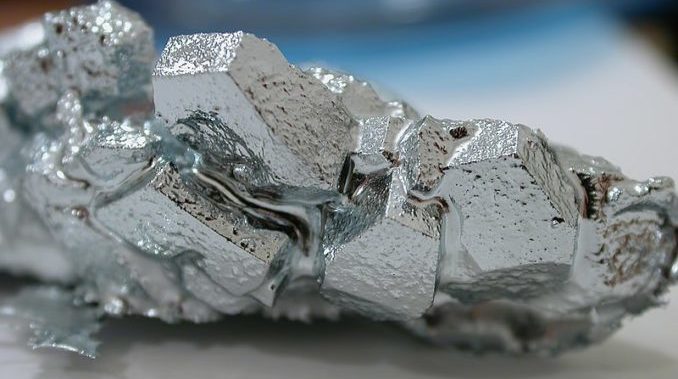
It’s science time! Or, at the very least, weird tricks of science time!
Gallium is an element. It’s part of the standard periodic table of elements, a metal sitting at position #31, right beside zinc and just underneath aluminum. Its most famed trait is its melting point, just over 85 degrees Fahrenheit. What that means, in practical terms, is that you can have a chunk of gallium sitting on a table at room temperature, pick it up to show someone, and have it melt into a liquid while in your hands because of body temperature.
Evidence!
One of the best things about gallium is that it looks a lot like mercury but, unlike that liquid metal, it doesn’t seep into your skin and poison you… or release toxic vapors that can be inhaled, poisoning you. Not suffering severe and sometimes permanent nerve damage from metallic poisoning is an excellent idea.
You wouldn’t want to eat gallium for the same reason you don’t want to consume any other metal, but beyond that, you can just play with it… although it does stain, so that should be a consideration.
That’s a bit of basic science that most people learned in grade school, whether or not they remember it. What was not learned was gallium infiltration.
Recall where it is situated on the periodic table? If gallium were truly left underneath aluminum, the infiltration reaction would happen. Aluminum is a fairly strong metal, and it reacts with many other elements. Oxygen, for example, mixes with aluminum to form aluminum oxide (more about that in a few.) Gallium mixes with aluminum to form an alloy of the two metals with some interesting properties.
The amalgamation of gallium and aluminum retains the appearance of the original aluminum, with some discoloration and surface pitting. It’s not simply eating away slowly at the surface level, though; gallium will seem into the aluminum, interfering with the strong structure of the aluminum and resulting in a brittle, almost claylike substance.
It’s easiest to get started if you take some sandpaper and scratch the surface of the aluminum first. Otherwise that aluminum oxide layer will act as a protector… at least for a while. The gallium will still seep into the aluminum, but the difference is a matter of hours as opposed to days.
It’s a fun, safe experiment for kids and teens alike. And if you have something locked away and you’ve long since lost the key, you might consider checking if it’s an aluminum lock. If it is, you might have more fun with some practical chemistry than you would with bolt cutters… and you can get fifty grams of the stuff for less than $20.
Question of the night: Did you participate in science fairs?
